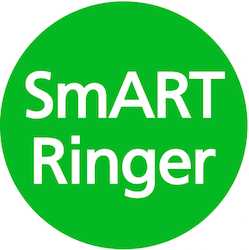Re-reading something I wrote a while ago on Plain Hunting, I realise what a remarkably long way I have come in the past six months. What seemed tremendously difficult then, strikes me as trivial now.
I only hope that the same alchemy will occur now I’m embarking on Plain Bob Doubles. Einstein once said that the definition of insanity was doing the same thing over and over again and expecting a different result. I am no Einstein and can cheerfully make the same mistakes in a slightly different context and be surprised when things do not work out. Curiously, the first few items on my list of tips, such as:
1.Make sure that you are attempting Plain Bob Doubles and not Plain Bob Minor,
2.Beware the sadistic conductor, and
3.Just because you can manage it in one tower, it does not mean that you can manage it in any tower
ALL STILL APPLY!
Now for some additional pitfalls when learning Plain Bob Doubles (PBD for short):
•On the treble. You might think it is perfectly possible to ring a plain course by following the numbers, as long as you are able to transpose fairly quickly. ABCD becomes DABC, becomes CDAB, becomes BCDA. But if someone yells “Bob” things quickly become more complicated and you cannot possibly learn them all off by heart. Believe me, I have tried very hard for some weeks and it just fried my brain.
You have to come up with a better strategy. Namely count your place, follow the ropes, feel the rhythm. Teachers will tell you “but it is just plain hunting over different bells”.
Quite – over different bells.
They have forgotten that at this stage of learning most of us are all slavishly following the numbers. We do not easily do different bells.
•Covering for PBD is great fun if you are allowed to rely on rhythm alone and stare at someone else’s shoes throughout. All you have to do is count 1 2 3 4 5 me, 1 2 3 4 5 me, and everyone else can bob in front of you as often as they like. If this is your strategy but someone insists that you look at the ropes (with the best possible intentions – they really do want you to develop ropesight), it can be like attempting to pat your head and rub your tummy at the same time.
My rhythm disappears asIconsider “is that 2 or 3 I should be following?” and it all starts going wrong. If you do want to stick to what works best for you, it may be necessary to develop an intelligent-looking gaze around the circle which is actually a glaze rather than a gaze, but don’t tell anyone that I said so.
•Ropesight. My nemesis – that shy unicorn always lurking just around the corner. I catch a flash from the corner of my eye – is that the mythical beast finally? – and then it has skipped away.
I have come to realise that the better you are at remembering the numbers of the bells you have to follow, the less easy it is to develop ropesight, however hard you wish for it.
•Ringing by rhythm alone is possible with a virtual and perfect band. If you can practise on a training bell whilst mirroring a good ringer, you can learn a lot, but do not be surprised if this does not transfer easily to a real bell in a real tower with some real human ringers.
•Moving to an inside bell. I am still not sure what is the most sensible order of play. Treble to PBD until you can manage to follow the bobs without a care in the world before moving inside? Or move inside once you can manage a plain course on the treble? I suspect, if like me ropesight is elusive, you might as well move inside sharpish and get to grips with the dodges and places, otherwise you might be hanging around on that treble for years to come.
Those are my tips for learning to ring Plain Bob Doubles. At the start it is not easy – it is the hardest ringing thing that you have done so far by a long chalk. Hopefully, it will not be the hardest ringing thing that you ever do, because that would mean that you never have a crack at Plain Bob Triples or Caters or Cinques or Minor or Major or Royal … . That would be a great shame.
This article from Mary Jones (the Accidental Ringer) appears in the January 2020 edition of Tower Talk, ART’s free quarterly e-magazine for new ringers. To make sure you don’t miss out on the next edition, sign up to receive future copies here

